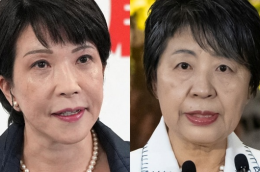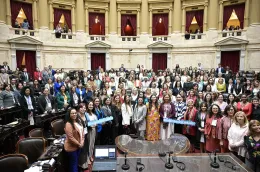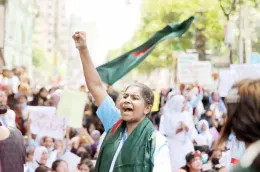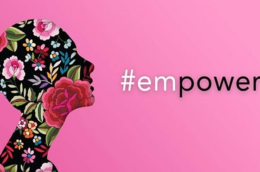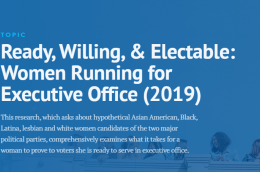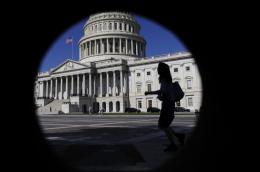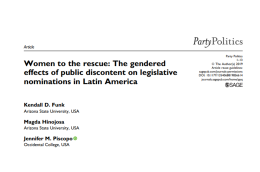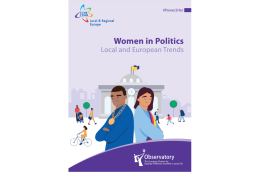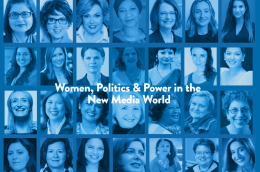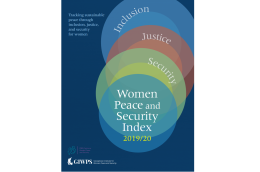Women's Leadership
Main navigation
Japan could soon have its first female prime minister.
The country's ruling Liberal Democratic Party (LDP) will later this month choose a new leader who will be virtually guaranteed the top job.
In the running are two formidable women: Foreign Minister Yoko Kamikawa and Economics Minister Sanae Takaichi.
Having either become prime minister would seem to be a dramatic leap forward for a country which lags behind most of the world in measures of political gender equality.
However, observers say having Ms Takaichi smash the political glass ceiling would not necessarily be good for progressive issues in Japan more generally.
Who are the women running for the leadership?
Ms Takaichi has been a member of Japan's diet, or parliament, since 1993 and ran unsuccessfully for the leadership of the LDP in 2021.
A protege of former prime minister Shinzo Abe, she has labelled her big spending economic stimulus policies "Sanaenomics" following his famous "Abenomics".
She's also known as a hardline conservative on social issues and often cites Margaret Thatcher, the UK's conservative "Iron Lady" prime minister from the 1980s, as an inspiration.
Read here the full article published by the ABC News on 13 September 2024.
Image credits: ABC News
What you need to know:
In the bustling corridors of the UN Kenya office, a quiet revolution has been taking place under the stewardship of an unassuming powerhouse. Anna Mutavati, with her calm demeanour and disarming simplicity, has been reshaping the landscape of women's rights and political participation in Kenya for the past five years.
As she prepares to ascend to a new role as Deputy Director of the UN Women regional office for Eastern and Southern Africa, her legacy serves as a testament to the power of dedicated leadership and strategic intervention.
Read here the full article published by The Nation on 10 September 2024.
Image credits: The Nation
In one of the biggest electoral years in recent history, 107 countries have never had a woman Head of State. In 2024, women held only 27 per cent of seats in national parliaments and 35.5 per cent of seats in local governments.
The United Nations promotes the principles that underly the ideal of democracy: peace, security, development, and human rights. In democratic systems, women and men have equal rights and are free from discrimination, and people have a say in decisions and can hold decision-makers accountable.Women’s political participation is critical for a well-functioning democracy.
Their inclusion is a matter of justice and a key factor in creating more effective governance. Having more women in policymaking has shown to help advance legislation on crucial issues, such as health, education, childcare, infrastructure and ending violence against women and serve as an inspiration for girls to pursue higher education and career opportunities.Yet, women’s voices are missing from decision-making in every region of the world.
On the International Day of Democracy on 15 September, and in the run-up to the 30th anniversary of the visionary Beijing Declaration and Platform for Action—the most comprehensive global agenda for the achievement of gender equality and the empowerment of women and girls—find out why there are so few women in decision-making and what can be done to close the gap.
Read here the full article published by UN Women on 10 September 2024.
September 4, 2024 (JUBA) – The Tumaini Initiative and its mediators should adopt an inclusive, transparent, and people-centered mediation process, women leaders resolved during a round table discussion.
The group, in a communique, extended to Sudan Tribune, urged the mediators to visit South Sudan to consult with conflict-affected communities, stakeholders, and the broader population to gather their views and experiences.
“After thorough reflection and thought-provoking discussions, we agree upon and put forward the following key priority areas, as well as corresponding recommendations that call for an inclusive and holistic approach to addressing the challenges faced by South Sudanese women and girls,” it reads in part.
Represented by 16 different organizations, the coalition urged the government of South Sudan to expedite the adoption of the National Action Plan (NAP) 2020-2025 and allocate sufficient funding to the Ministry of Gender, Child, and Social Welfare to support its implementation.
All political parties, it noted, should adhere to the 35% affirmative action policy for women by appointing more women to leadership positions and cease the practice of replacing women in decision-making roles with men.
“Prioritize the Tumaini Peace process and address any contradictions between the Tumaini Initiative and the R-ACRSS through political dialogue and national consensus that includes women and civil society organizations,” reads the communique.
Read here the full article published by the Sudan Tribune on 4 September 2024.
Image credits: Sudan Tribune
One of the most exciting features of Bangladesh’s “Monsoon Revolution” were the visuals of courageous young girls and women on the streets, their defiant chants animating fierce feminist organizing and the individual and collective acts of rebellion of women against a powerful fascist regime.
They appealed to our conscience as daughters, sisters, mothers, and citizens, enabling us to overcome our fear of the unknown and leave our “natural domain” of the home to engage with the outside world of politics and public debate.
Indeed, the student-led uprising would not have been successful if ordinary girls and women had not mobilized in the public and private sphere to inform and shape public debate and shift public opinion.
Yet, as we celebrate the one month anniversary of the incredible achievements of the student-led uprising, the absence of women from political spaces driving the reformation agenda and in leadership positions in public office is alarming.
From the scattered presence of women in the interim government’s meetings to their limited inclusion in leadership positions in the chief adviser’s office and cabinet, women have been strikingly relegated to the backseat of the reformation process.
How did the face of the students' platform on anti-discrimination post August 5 become largely male? The masculine nature of the leadership, debate, and deliberations that excludes or limits participation of women in all their diversity undermines the revolutionary promise of the uprising and limits the possibilities of imagining an inclusive future.
Read here the full article published by Dhaka Tribune.on 6 September 2024.
Image credits: Dhaka Tribune
True progress for women is not merely about breaking barriers but fundamentally transforming the structures that have long hindered their advancement. Nowhere is this transformation more critical than in the realm of electoral politics, where Indian women face significant under-representation and systemic obstacles. Despite some strides in recent years, India’s position in global rankings of female political representation remains dismal, highlighting the urgent need for comprehensive reform and active measures to create a more inclusive and equitable political environment.
Current State of Women in Indian Politics: India, with its vast population and diverse demographics, ranks a troubling 143rd in the monthly ranking of women in Parliament compiled by the Inter-Parliamentary Union’s Parline, out of approximately 180 countries. This places India alongside nations such as Congo, Botswana, and Jordan, underscoring a significant disparity between the potential and the reality of women’s political representation.
In recent general elections, female voter engagement has shown a steady increase. However, this has not translated into a proportional rise in successful female candidates. Out of 543 Lok Sabha constituencies, only 74 women candidates emerged victorious in the latest elections, resulting in a strike rate of 9.3%. This figure is a decline from the 11.7% strike rate observed in 2019 and a stark contrast to the 48.6% strike rate in 1962, when 74 women contested and 36 won. Despite over 790 women contesting this year, the number of women hopefuls remains significantly lower across all parties and independent candidates, freezing the level of female representation for another five years. This stagnation will inevitably impact debates, policy-making, and the presence of women in crucial decision-making positions.
Read here the full article published by The Sentinel on 7 September 2024.
Image credits: The Sentinel
